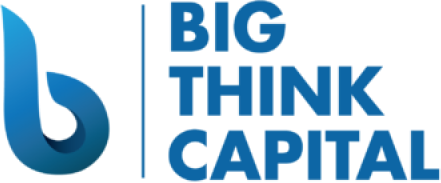Top Small Business Loans of 2025: A Comprehensive Guide for Entrepreneurs
Estimated Reading Time: 8 minutes
- Understand the evolving landscape of small business loans in 2025.
- Evaluate eligibility criteria for various loan options.
- Explore a range of funding options tailored to different needs.
- Learn how to avoid common pitfalls in the loan application process.
- Implement a checklist for a smooth funding process.
Table of Contents:
- What the Topic Means for Small Businesses in 2025
- Eligibility or Decision Factors Owners Actually Face
- Funding Options Overview Tied to the Topic
- How to Evaluate Costs, Terms, and Tradeoffs
- Common Pitfalls and How to Avoid Them
- Implementation Checklist
- Actionable Takeaways
- Internal Connection
- Call to Action
- References
As we move further into 2025, small businesses are facing an ever-evolving financial landscape. Whether you are seeking funds for expansion, equipment purchases, or managing day-to-day operations, understanding the types of loans available is crucial. In this guide, we will explore the top small business loans of 2025, focusing on how they can meet your unique needs, flow with current market realities, and provide an accessible path to funding.
Small business owners must navigate not just their operational requirements but also a complex financing environment marked by shifting regulations, interest rates, and lender expectations. This blog aims to clarify these complexities, giving you the tools necessary to choose the right financing option for your venture.
What the Topic Means for Small Businesses in 2025
The economic backdrop of 2025 presents both challenges and opportunities for small businesses. As of early 2025, inflation rates have stabilized, but interest rates remain relatively high compared to pre-pandemic levels. As a result, lenders are adopting more stringent underwriting standards, which can affect access to funding. Therefore, it’s essential to find loans that balance cost with favorable terms, ensuring your business doesn’t compromise its financial health in pursuit of funding.
Eligibility or Decision Factors Owners Actually Face
When seeking a loan, small business owners must consider various eligibility criteria that can influence their decision-making process:
- Credit Score: A higher credit score typically translates to more favorable loan terms and interest rates.
- Business Age: Established businesses may have an easier time qualifying for loans compared to newer startups.
- Annual Revenue: Many lenders look for proof of stable revenue to assess your ability to repay the loan.
- Industry Risk: Certain industries are perceived as higher risk, which can impact both eligibility and terms.
Funding Options Overview Tied to the Topic
There are several loan options available for small businesses in 2025, each catering to different financial needs:
1. Working Capital Loans
These loans provide immediate cash to manage daily operations. They are typically short-term, with rapid approval processes. Speed and Ease of Application make working capital loans a popular choice for small businesses needing quick access to funds.
2. SBA Loans
Backed by the U.S. Small Business Administration, these loans offer low interest rates and longer repayment terms. However, the application process can be lengthy and requires extensive documentation.
3. Equipment Financing
If you need funds specifically for purchasing equipment, this type of financing can be ideal. Lenders may offer favorable terms based on the equipment’s value itself.
4. Merchant Cash Advances
This option provides a lump sum in exchange for a percentage of future credit card sales, offering Flexibility in Terms and Loan Structures that is beneficial for businesses with fluctuating revenue.
5. Lines of Credit
A line of credit offers businesses a flexible funding option that allows you to draw funds as needed. This can help manage cash flow effectively and reduce interest costs when funds are not utilized.
How to Evaluate Costs, Terms, and Tradeoffs
Evaluating a loan’s costs and terms requires careful consideration:
- Interest Rate: Analyze whether the rate is fixed or variable and how it affects your long-term financial planning.
- Fees: Look for application fees, origination fees, and any prepayment penalties that could increase overall costs.
- Repayment Terms: Ensure that the repayment schedule aligns with your business’s cash flow to avoid defaults.
Common Pitfalls and How to Avoid Them
Being informed can help you sidestep frequent mistakes:
- Rushing the Application: Take your time to understand various loan options before submitting applications.
- Ignoring the Fine Print: Thoroughly review loan agreements to avoid unexpected fees and terms.
- Not Considering Alternative Financing: Explore all options, including community banks and alternative lenders that may offer better terms.
Implementation Checklist
Once you decide on a funding option, consider this checklist to ensure a smooth funding process:
- Assess your business needs and determine how much funding you require.
- Research different lenders and their loan offerings.
- Gather necessary documentation, including financial statements, business plans, and tax returns.
- Submit your application and monitor the process, staying in touch with your lender.
- Review the final terms before signing the loan agreement.
Actionable Takeaways
- Understand your credit health before applying for any loan, as this will influence your eligibility.
- Look for lenders that prioritize Fairness and Transparency in their terms and application processes, avoiding hidden fees.
- Consider alternative funding options that may align with your business model, especially those that provide quick access to capital.
Internal Connection
At Big Think Capital, we specialize in helping small businesses navigate funding options that align with your unique needs. With our expertise, we can guide you through the complexities of securing financing, ensuring you find the best solution for your operations.
Call to Action
If you’re ready to explore your financing options, visit us at Big Think Capital or speak with one of our funding experts today. Let us partner with you to achieve your business goals.
This blog post is for educational purposes only and does not constitute legal, tax, or investment advice.
References
- SBA 7(a) Loan Program Overview (U.S. Small Business Administration, 2025)
- Interest Rate Trends and Forecasts (Federal Reserve Bank, 2025)
- Small Business Financing: NFIB Data Insights (National Federation of Independent Business, 2025)
- 2025 State of American Business Report (U.S. Chamber of Commerce, 2025)






